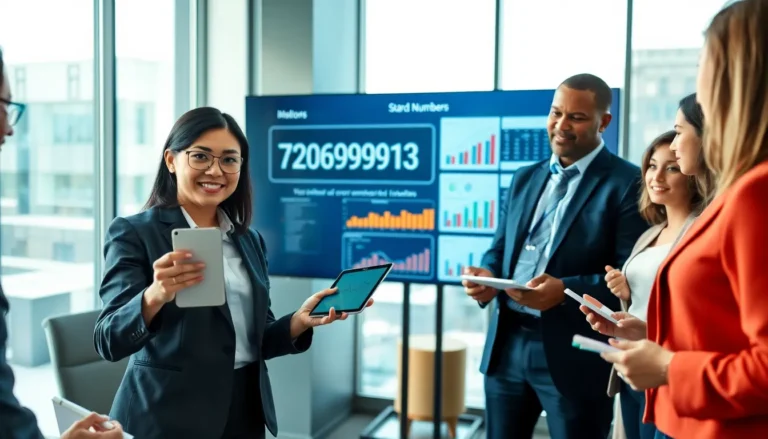Table of Contents
ToggleImagine this: you’re at a party, your friend’s iPhone is gasping for battery life, and yours is happily thriving. You might wonder, can I play the hero and charge another iPhone with mine? The answer isn’t as straightforward as you’d think.
While iPhones are known for their sleek designs and impressive features, sharing power isn’t one of them. Unlike some Android devices that can act as portable chargers, iPhones don’t have that nifty ability built-in. But don’t worry; there are still ways to save the day without turning into a human power bank. Let’s dive into the world of iPhone charging and discover how to keep those devices alive when it matters most.
Understanding iPhone Charging Capabilities
iPhones can’t share battery power with other devices. While they excel in various features, they lack the ability to charge another iPhone directly.
Wireless Charging Overview
Wireless charging isn’t supported between iPhones. Devices utilize the Qi standard for wireless charging, but this is primarily for charging them through a compatible charging pad. Many Android devices offer reverse wireless charging, allowing them to share power. iPhones don’t have this feature. Users must rely on traditional charging methods. Several options exist for charging iPhones, including cables and charging docks.
Wired Charging Limitations
Wired charging requires specific arrangements to connect devices. Standard Lightning cables allow charging an iPhone via a power source, such as an outlet or computer. Connecting two iPhones directly with a Lightning cable doesn’t work for charging. Adapters may enable other connections, but iPhones don’t support this functionality limitations. Users need to be aware of these constraints when assisting others with battery issues. Portable power banks serve as effective alternatives when sharing power becomes necessary.
Can You Use An iPhone To Charge Another iPhone?
iPhones do not support charging another iPhone. They lack features that permit battery sharing, making them reliant on traditional charging methods.
Device Compatibility
Apple’s design for iPhones focuses primarily on user experience and device performance rather than charging other devices. An iPhone can only connect to charging pads or docks designed for its own charging. Using a Lightning cable to connect two iPhones does not initiate battery transfer, inhibiting any potential to share power. Other Apple devices, like iPads, may have charging features, but the iPhone remains unqualified for this purpose, emphasizing the need for additional charging options.
Battery Sharing Features
While some Android smartphones offer reverse wireless charging, iPhones do not provide this functionality. iPhones conform to the Qi standard, exclusively for charging compatible devices. The absence of direct power-sharing technology limits user capabilities in urgent situations. Users seeking to charge another phone should consider using portable power banks as practical alternatives. Such devices permit users to share battery life efficiently without needing direct connections between iPhones.
Methods To Charge Another iPhone
Charging another iPhone directly using one’s own is not feasible. However, alternative methods exist for meeting power needs.
Using Lightning Cable
Connecting two iPhones with a Lightning cable won’t transfer battery power between them. iPhones lack the functionality to act as chargers via this method. Lightning cables serve to connect devices for data transfer or direct charging from a wall outlet or power source. Users can still utilize the cable to charge the iPhone from a power bank or wall adapter. Thus, while a Lightning connection is essential for various functions, it does not enable battery sharing.
Utilizing Wireless Charging
Wireless charging between iPhones isn’t possible despite the inclusion of Qi technology. Only charging pads or compatible accessories utilize this feature. iPhones can charge when placed on a Qi-certified pad, but they cannot reciprocate charging to other iPhones. Instead, wireless charging aims at streamlining recharging processes, enhancing user convenience when plugged devices aren’t available. For users needing to share power, turning to portable power banks emerges as a more practical solution.
Pros And Cons Of Charging Another iPhone
While charging one iPhone with another presents some benefits, it also comes with notable drawbacks. Understanding both sides helps users make informed decisions.
Advantages
One advantage of this concept is convenience in emergencies. Users can share power when no charger is available or during unexpected situations. Another benefit lies in the simplicity of the Lightning cable connection. This type of charging requires only a compatible cable, making it easy to set up. Additionally, users can extend device usage moments by helping others maintain their battery levels. Sharing a charge can enhance social interactions, creating a sense of community. This might be particularly useful in crowded places where access to outlets is limited.
Disadvantages
Charging another iPhone presents several disadvantages. One primary concern involves limited capability, as iPhones do not support reverse charging. Battery transfer cannot occur through direct connections, which frustrates users expecting different functionality. Users also face battery drain risks, as one’s charge decreases while attempting to provide power. This scenario can leave the initial device with insufficient charge levels. Moreover, time-consuming processes arise when waiting for shared charging to finish, impacting productivity. Overall, these drawbacks suggest relying on more effective charging solutions like power banks.
While iPhones offer impressive features they fall short when it comes to sharing battery power. Users can’t charge one iPhone with another directly or through wireless means. This limitation makes it clear that relying on iPhones for power sharing isn’t practical.
For those in need of a quick power boost during emergencies portable power banks are the best solution. They provide a reliable way to assist others without risking battery drain on the device providing power. Understanding these limitations helps users make informed choices about charging options and ensures they stay connected when it matters most.





